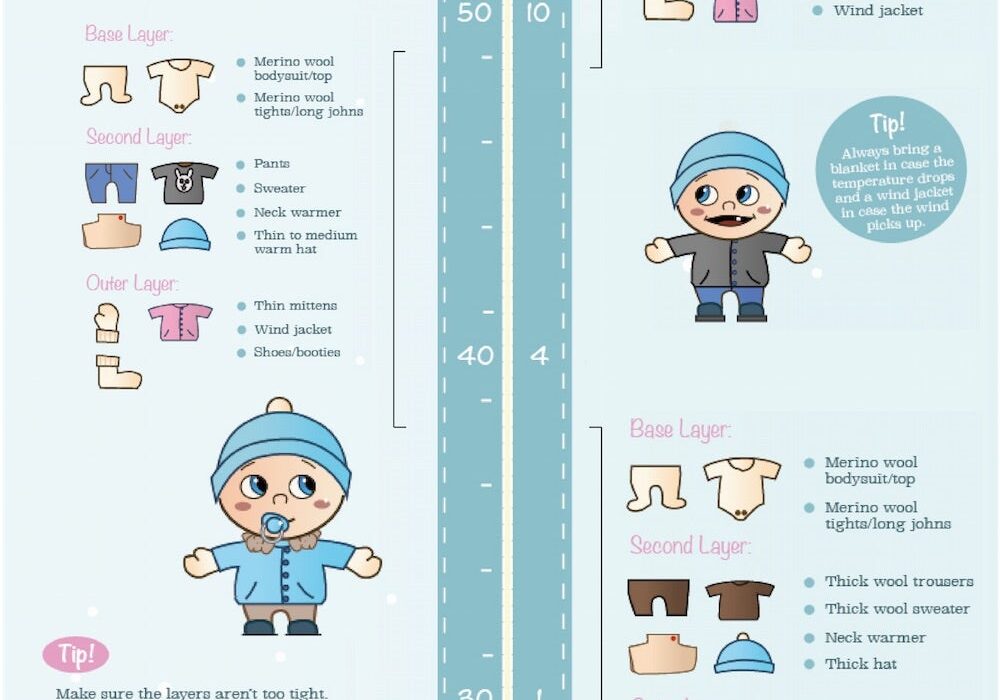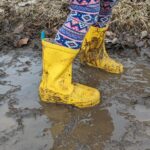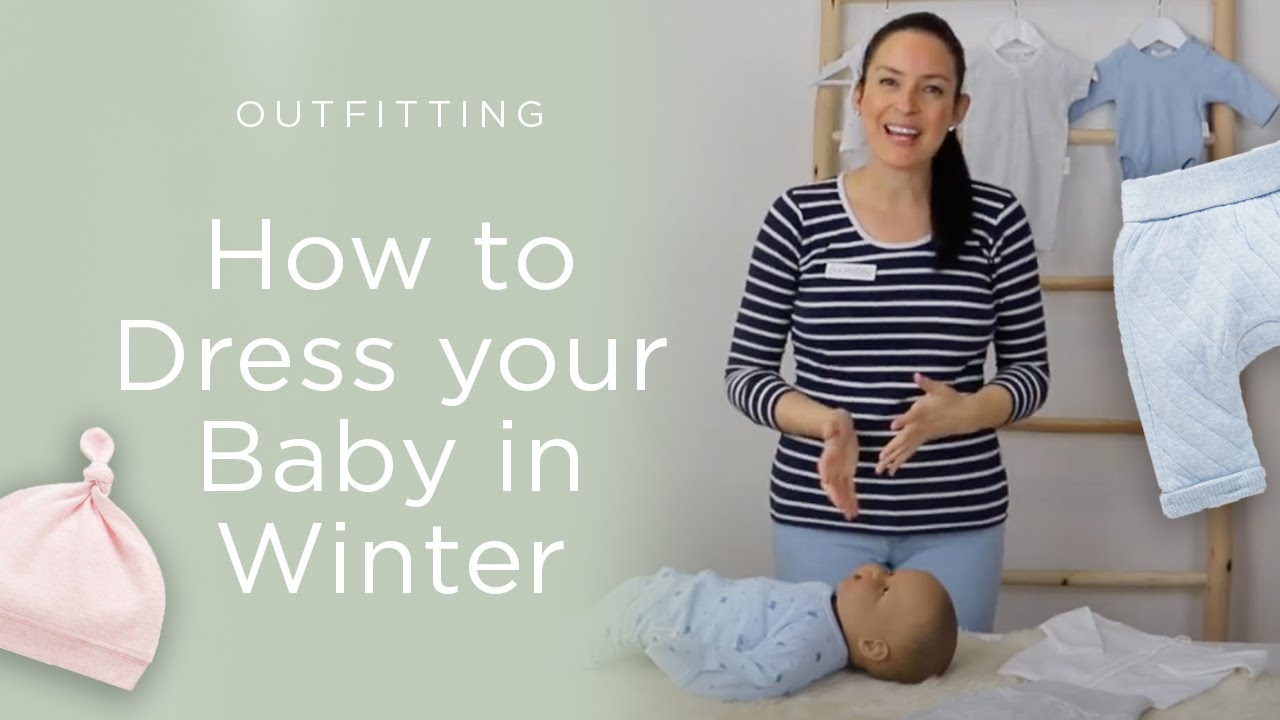Dressing a newborn for cold weather can be challenging. You want to keep them warm and safe.
Winter months bring unique challenges for new parents. The cold can be harsh on a newborn’s delicate skin. It’s essential to dress them properly to ensure their comfort and health. As new parents, you might feel overwhelmed by the choices.
Fear not; this guide will help you make the best decisions. We’ll cover everything you need to know about layering, fabrics, and accessories. By the end of this post, you’ll be confident in dressing your baby for the cold. Stay tuned to keep your little one warm and cozy all winter long!
Choosing The Right Fabrics
Choosing the right fabrics is essential for dressing a newborn in cold weather. The right material can keep your baby warm and comfortable. It can also prevent skin irritation. Let’s explore the best fabric choices for your newborn.
Cotton Vs. Wool
Cotton and wool are popular choices for baby clothes. Each has its own benefits.
| Fabric | Benefits |
|---|---|
| Cotton | Soft, breathable, hypoallergenic |
| Wool | Warm, moisture-wicking, natural insulation |
Cotton is gentle on a newborn’s skin. It is breathable and reduces the risk of skin irritation. Wool is excellent for keeping your baby warm. It wicks away moisture, keeping the skin dry. Both fabrics have their own unique advantages. Choose based on your baby’s needs and the weather conditions.
Breathable Materials
Breathable materials are key for your newborn’s comfort. These fabrics allow air to circulate, preventing overheating.
- Cotton – Promotes air circulation and is soft on skin.
- Bamboo – Naturally breathable and has antibacterial properties.
- Muslin – Lightweight and breathable, ideal for layering.
Using breathable materials helps regulate your baby’s body temperature. This is important in cold weather. Layering with these fabrics can provide the right balance of warmth and breathability.
Layering Basics
Properly dressing your newborn for cold weather can be challenging. Layering is key. It ensures your baby stays warm and comfortable. Here’s a guide to layering basics.
Inner Layers
Start with a soft, breathable onesie. Cotton is a good choice. It absorbs moisture and keeps your baby dry. Consider long sleeves and footed pants. These help trap heat. Avoid tight clothing. It should fit snugly but allow movement.
Outer Layers
Next, add a warm sweater or fleece jacket. These provide insulation. Top it with a windproof and waterproof coat. This protects against cold and wet weather. Don’t forget the extras. A hat, mittens, and socks are essential. They prevent heat loss from the head, hands, and feet.
Essential Winter Clothing
When dressing a newborn for cold weather, choosing the right clothing is crucial. Essential winter clothing helps keep your baby warm and comfortable. Let’s explore some key items that every newborn needs during the winter months.
Bodysuits And Onesies
Bodysuits and onesies are perfect base layers. They provide warmth without adding bulk. Choose ones made from soft, breathable cotton. Long-sleeved bodysuits offer extra coverage for your baby’s arms. Snap closures make diaper changes easy and quick. Opt for bodysuits with envelope necklines for easy dressing. Onesies with footies keep your baby’s feet warm.
Sweaters And Cardigans
Sweaters and cardigans add an extra layer of warmth. They are easy to put on and take off. Choose materials like wool or fleece for added insulation. Look for cardigans with buttons or zippers. These are easier to manage than pullovers. Layering with sweaters and cardigans allows you to adjust your baby’s temperature. If you notice your baby getting too warm, you can easily remove a layer.
Head And Neck Protection
Protecting your newborn’s head and neck in cold weather is crucial. Babies lose heat quickly from these areas. Keeping them warm ensures their comfort and health. Let’s explore the best ways to achieve this.
Hats And Beanies
Hats and beanies are essential for keeping your baby’s head warm. Choose soft, snug-fitting options. Avoid hats with loose strings or ties, which can be dangerous. Here are some tips for selecting the perfect hat:
- Opt for fleece-lined hats for extra warmth.
- Choose breathable materials to prevent overheating.
- Ensure the hat covers the ears well.
Consider hats with ear flaps for additional coverage. For newborns, a hat with a chin strap can keep it securely in place.
Scarves And Neck Warmers
Scarves and neck warmers offer extra protection for your baby’s neck. Choose soft, non-itchy fabrics. Ensure the fit is snug but not too tight. Here are some practical options:
- Infinity scarves are easy to slip on and off.
- Neck gaiters provide full coverage and stay in place.
- Button-up scarves can be adjusted for the perfect fit.
Avoid long, loose scarves that can pose a choking hazard. Instead, opt for shorter, more manageable options.
Keeping Hands And Feet Warm
Keeping your newborn warm during cold weather is crucial. Their tiny hands and feet lose heat quickly. Ensuring they stay warm helps maintain their overall body temperature. This section discusses how to keep your baby’s hands and feet warm.
Mittens And Gloves
Mittens are essential for newborns. They keep little fingers warm. Opt for mittens with soft, breathable fabric. Cotton is a great choice. It is gentle on delicate skin. Avoid gloves with tight elastic bands. They can restrict blood flow. Consider mittens that cover the wrist. This design keeps the mittens in place. For extra warmth, use layered mittens. Two thin layers can be better than one thick pair.
Booties And Socks
Booties and socks are vital for keeping feet warm. Choose socks made from wool or cotton. These materials offer warmth and comfort. Ensure the socks fit well. Loose socks can slip off easily. Tight socks can cause discomfort. Booties provide an extra layer of protection. Look for booties with a secure fit. Elastic or snap closures work well. Avoid booties with small parts. They can pose a choking hazard. Layering socks and booties can provide extra warmth. Ensure the layers are not too tight.
Choosing The Right Outerwear
Dressing a newborn for cold weather can be challenging. The key is to choose the right outerwear. The outerwear should provide warmth and comfort. It should also be easy to put on and take off. Below, we will explore two types of outerwear: snowsuits and jackets or coats.
Snowsuits
Snowsuits are great for extreme cold. They cover the entire body, keeping your baby warm from head to toe. Look for snowsuits with:
- Insulation: This keeps your baby warm even in freezing temperatures.
- Waterproof material: This helps to keep your baby dry.
- Easy access zippers: This makes diaper changes easier.
Some snowsuits come with built-in mittens and booties. These are ideal for very young babies. Make sure the snowsuit is not too tight. Your baby should be able to move comfortably.
Jackets And Coats
Jackets and coats are versatile options. They are suitable for milder winter days. Here are some tips for choosing the right jacket or coat:
- Layering: Choose a jacket that allows for layering underneath.
- Hood: A hood provides extra warmth for your baby’s head.
- Material: Fleece-lined or down-filled jackets offer great warmth.
Make sure the jacket or coat fits well. It should not be too loose or too tight. A good fit ensures warmth and comfort.
In conclusion, choosing the right outerwear is crucial for keeping your newborn warm and comfortable. Snowsuits and jackets or coats each have their benefits. Select the one that best fits your needs and the weather conditions.
Car Seat Safety
Ensuring your newborn’s safety in the car seat during cold weather is crucial. Proper dressing and car seat accessories can help. This section focuses on how to keep your baby warm while prioritizing car seat safety.
Avoiding Bulky Layers
Bulky clothes can make car seats unsafe. Thick coats and snowsuits prevent the harness from fitting snugly. In a crash, this extra space can compress, increasing the risk of injury.
Dress your baby in thin, warm layers. For example, a onesie, pants, and a long-sleeve shirt. Add a thin fleece jacket for warmth. The harness should fit snugly against the baby’s body. You can check this by ensuring you can’t pinch any slack in the harness straps.
Use blankets for additional warmth after securing the harness. Place the blanket over the harness, not under it. This keeps your baby safe and warm.
Car Seat Covers
Car seat covers can help keep your baby warm without compromising safety. There are two main types: those that go over the car seat and those that go under the baby.
Avoid covers that go under the baby. These can interfere with the harness. Instead, use a cover that goes over the car seat. These covers are safer and still provide warmth.
Ensure the cover doesn’t have padding behind the baby. This can also affect the harness fit. Choose a cover designed for your specific car seat model. This ensures a proper fit and maintains safety standards.
Following these tips can help keep your newborn safe and warm during cold weather travel.

Credit: www.pinterest.com
Monitoring Baby’s Temperature
Keeping your newborn warm in cold weather is essential. But it’s equally important to avoid overheating. Monitoring your baby’s temperature can help ensure they are comfortable and safe. In this section, we will discuss how to recognize signs of overheating and how to check your baby’s skin temperature.
Signs Of Overheating
Overheating can make a baby uncomfortable and restless. Look out for these signs:
- Flushed or red skin
- Excessive sweating
- Rapid breathing
- Fussiness and irritability
If you notice these signs, your baby might be too warm. Adjust their clothing or remove a layer to help them cool down.
Checking Skin Temperature
Checking your baby’s skin temperature is a simple way to ensure they’re not too hot or too cold. Follow these steps:
- Touch their neck or back. These areas give a good indication of their core temperature.
- If the skin feels hot or sweaty, they may be overheating.
- If the skin feels cool to the touch, they may need more warmth.
Avoid checking their hands and feet. Newborns often have cooler extremities, which can be misleading.
| Temperature Checkpoints | Action |
|---|---|
| Neck or Back | If hot, remove a layer. If cool, add a layer. |
| Hands and Feet | Ignore these areas for temperature checks. |
By following these tips, you can ensure your baby stays comfortable and safe in cold weather.
Dressing For Sleep
Dressing your newborn for sleep in cold weather is essential. It helps ensure their comfort and safety. You want your baby to stay warm without overheating. Let’s explore two key methods: sleep sacks and swaddling.
Sleep Sacks
Sleep sacks are wearable blankets. They provide warmth without loose blankets. This reduces the risk of suffocation. Choose a sleep sack with a TOG rating. The higher the TOG, the warmer the sleep sack. For cold weather, a TOG rating of 2.5 to 3.5 is ideal. Ensure the sleep sack fits snugly around the neck and armholes. This prevents the baby from slipping inside.
Swaddling
Swaddling can help keep your newborn warm. It also makes them feel secure. Use a swaddle blanket made of breathable fabric. Cotton or muslin works well. Wrap the baby snugly, but not too tight. Ensure their hips can move freely. Overheating is a risk. Monitor the room temperature and adjust the swaddle if needed. Always place your swaddled baby on their back to sleep. This reduces the risk of SIDS.
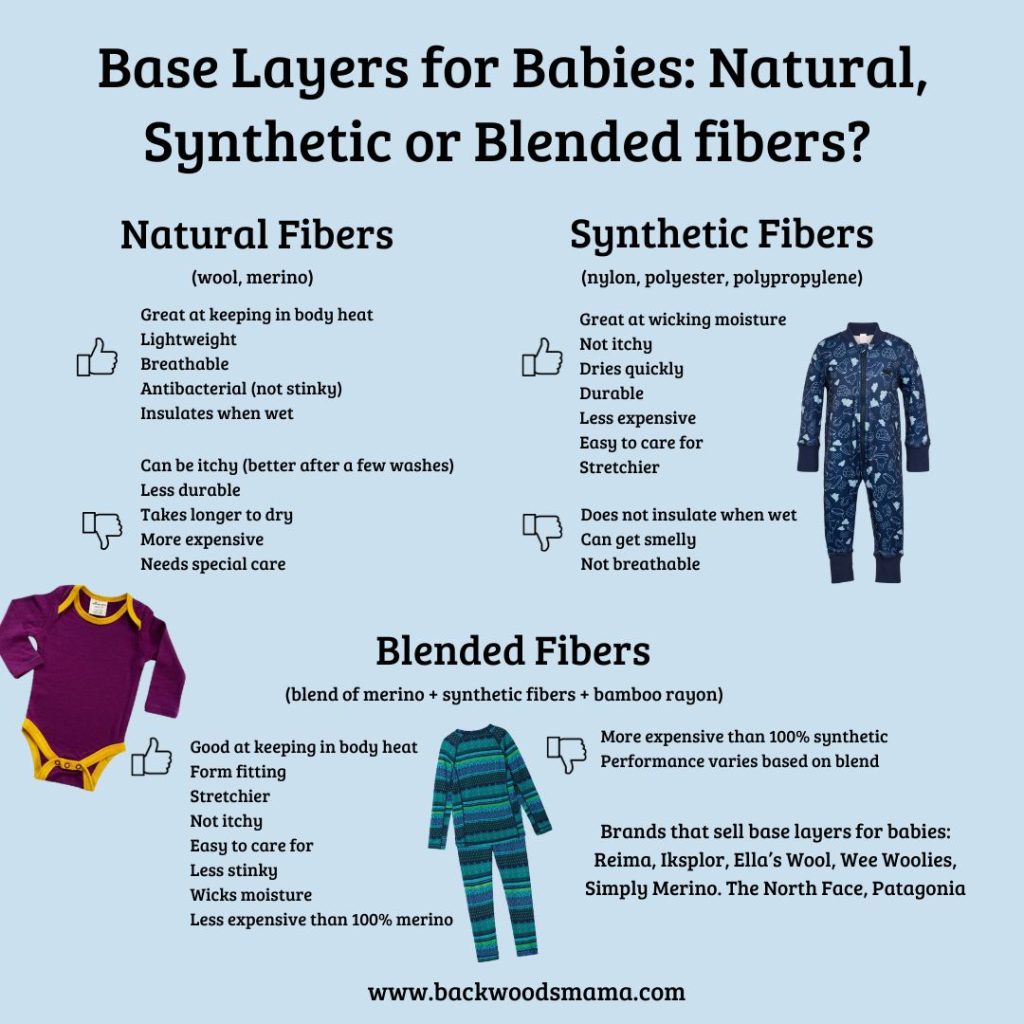
Credit: www.mystylelabel.com
Protecting Baby’s Skin
As the temperature drops, keeping your newborn warm is essential. Cold weather can be harsh on a baby’s delicate skin. It’s crucial to take steps to protect it from dryness and irritation. Here are some tips to keep your baby’s skin soft and healthy during the cold months.
Moisturizers
Using a good moisturizer is key to protecting your baby’s skin. A gentle, fragrance-free moisturizer can help lock in moisture. Apply it immediately after a bath to keep the skin hydrated.
| Type of Moisturizer | Benefits |
|---|---|
| Fragrance-free lotion | Reduces irritation and keeps skin soft |
| Ointment | Creates a barrier to lock in moisture |
| Cream | Thicker and longer-lasting hydration |
Avoiding Dry Skin
Dry skin is common in cold weather. To prevent this, keep your home humidified. A humidifier adds moisture to the air, preventing skin from drying out.
- Keep the room temperature moderate.
- Dress your baby in layers to retain warmth.
- Avoid long baths; short, warm baths are better.
Also, use a mild, fragrance-free soap during baths. Harsh soaps can strip away natural oils and cause dryness. Pat the skin dry gently with a soft towel and apply moisturizer right away.
By taking these steps, you can ensure your baby’s skin stays protected and healthy in cold weather.
Adjusting For Indoor And Outdoor
Dressing a newborn for cold weather can be tricky. Babies need to stay warm, but not too warm. It’s important to adjust their clothing based on whether they are indoors or outdoors. Here are some tips for keeping your little one cozy and comfortable.
Indoor Dressing Tips
Indoors, keep your baby warm but not too hot. The temperature inside is usually stable. Follow these tips:
- Use layers: A onesie and a sleeper are usually enough.
- Check the baby’s neck: If it’s sweaty, remove a layer.
- Avoid hats: Indoors, babies don’t need hats. They lose heat through their heads.
- Use sleep sacks: These are safer than blankets in the crib.
Outdoor Dressing Tips
When going outside, you need to add more layers. The cold weather can be harsh on a newborn. These tips will help:
- Layer up: Start with a onesie, then add a sweater and pants.
- Use a warm hat: Make sure it covers the ears.
- Mittens and booties: These keep the baby’s hands and feet warm.
- Outer layer: Use a snowsuit or a bunting bag for extra warmth.
- Check regularly: Feel the baby’s hands and feet. Add or remove layers as needed.
In summary, always adjust your newborn’s clothing to keep them comfortable. Pay attention to signs of overheating or being too cold. This will ensure they stay cozy and healthy during cold weather.
Traveling In Cold Weather
Traveling with a newborn in cold weather can be challenging. Keeping your baby warm and comfortable is a priority. Here are some tips to help you manage this task effectively.
Stroller Covers
A stroller cover is essential for cold weather travel. It shields your baby from wind, rain, and snow. Look for covers that are waterproof and windproof. Ensure there is proper ventilation to prevent overheating.
Stroller covers come in different materials. Fleece-lined covers offer extra warmth. Transparent plastic covers allow you to keep an eye on your baby. Some covers have zippers for easy access.
Baby Carriers
Using a baby carrier in cold weather keeps your baby close to your body. Your body heat provides natural warmth. Choose a carrier that fits over your winter coat.
Wrap your baby in layers before placing them in the carrier. Use a babywearing coat or cover for added protection. Ensure the carrier is snug but not too tight.
Baby carriers also allow for easy movement. They are convenient for short trips or crowded places. Always check your baby’s temperature and adjust layers as needed.
Common Mistakes To Avoid
When dressing a newborn for cold weather, it’s easy to make mistakes. These mistakes can make your baby uncomfortable or even unsafe. Learn the common mistakes to avoid to keep your baby warm and safe.
Overdressing
Many parents worry their baby might be cold and add too many layers. Overdressing can cause your baby to overheat. Babies cannot regulate their body temperature as well as adults. Keep this in mind:
- Dress your baby in one more layer than you are wearing.
- Use breathable fabrics to avoid trapping heat.
- Check your baby often for signs of overheating like sweating or flushed skin.
Using Unsafe Accessories
Accessories can be cute but may not be safe for your newborn. Using unsafe accessories can pose risks like choking or suffocation. Avoid these common pitfalls:
| Accessory | Potential Risk |
|---|---|
| Scarves | Choking hazard |
| Loose blankets | Suffocation risk |
| Hats with strings | Strangulation hazard |
Instead, opt for safe alternatives:
- Use a baby sleeping bag or wearable blanket.
- Choose hats without strings or ties.
- Use mittens to keep hands warm.
By avoiding these common mistakes, you can ensure your newborn stays warm and safe in cold weather.
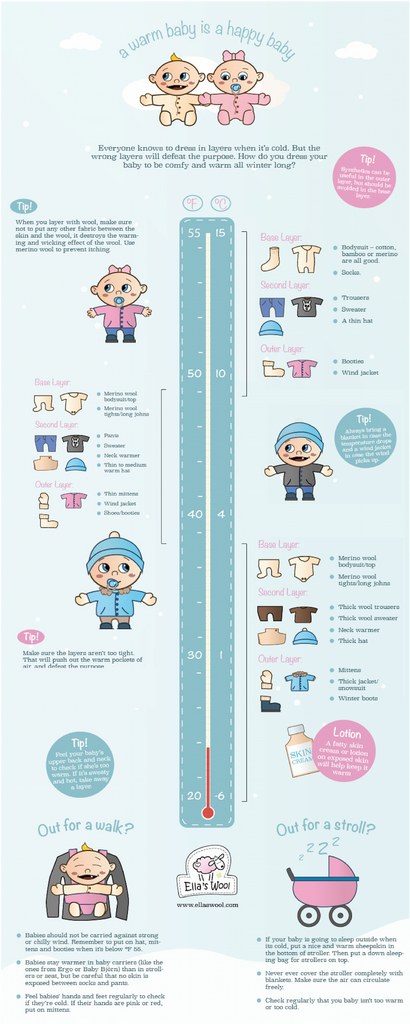
Credit: ellaswool.com
Frequently Asked Questions
How Many Layers Should A Newborn Wear In Cold Weather?
Dress your newborn in three layers. This includes a base layer, middle layer, and an outer layer.
What Type Of Fabric Is Best For Newborns In Winter?
Choose soft, breathable fabrics like cotton or wool. They keep your baby warm and comfortable.
How Can I Tell If My Newborn Is Too Cold?
Feel your baby’s neck or tummy. If they feel cool, add another layer of clothing.
Should I Use A Blanket For My Newborn In Winter?
Yes, but ensure it’s lightweight and breathable. Avoid heavy blankets to prevent overheating.
Conclusion
Dressing a newborn for cold weather requires care and attention. Choose layered clothing to keep your baby warm. Always start with a soft base layer. Add a cozy middle layer and finish with a weatherproof outer layer. Don’t forget hats, mittens, and socks.
Check your baby’s comfort regularly. Stay alert to signs of overheating or cold. With these tips, you can ensure your newborn stays cozy and safe in chilly weather.



